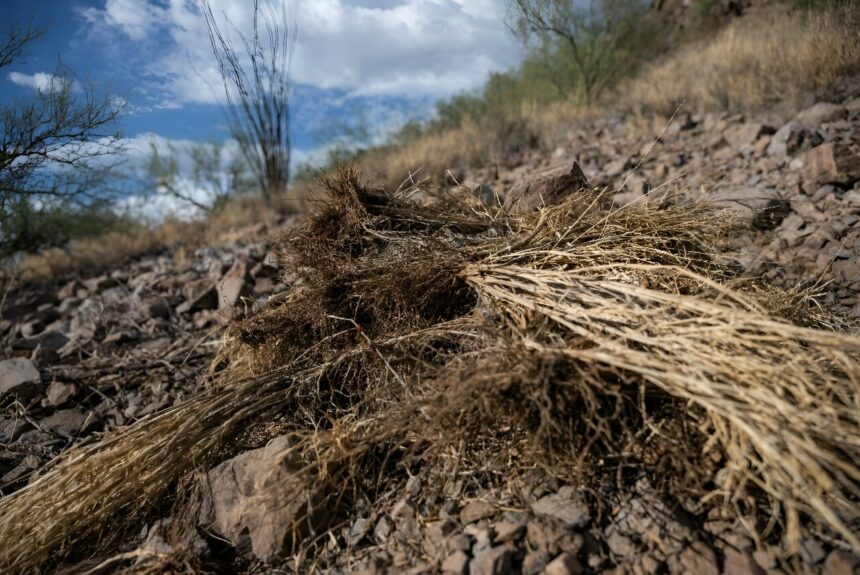As Hawaiians continue to grapple with the devastating effects of the wildfire on Maui, many residents are wondering what went wrong and which of the Hawaiian islands could be next. Downed power lines sparked the fire, and investigations and lawsuits are already underway as to who should assume liability. While Hawaii is thought of as a tropical paradise, dry and windy conditions increased the risk of wildfires spreading. Policymakers should not ignore a major factor that caused the fires to blaze hot and fast: invasive species.
>>>READ: AgARDA Can Spur Agricultural Innovation and Breakthroughs
Invasive species are an environmental threat multiplier. Not only do invasive species kill native plants and threaten healthy ecosystems, but they also contribute to more aggressive wildfires. Many invasive grasses and shrubs dry out and have a higher likelihood of burning than native plants. As the New York Times reported last month, “Varieties like guinea grass, molasses grass and buffel grass — which originated in Africa and were introduced to Hawaii as livestock forage — now occupy nearly a quarter of Hawaii’s landmass. Fast growing when it rains and drought resistant when lands are parched, such grasses are fueling wildfires across Hawaii.”
The pervasion of cheatgrass and buffelgrass has worsened the size and intensity of wildfires on the mainland, particularly in the western U.S. Critically, many invasive grasses recolonize the area after a wildfire, making the risk even worse. For instance, the Department of Interior noted that cheatgrass can grow two to five times faster in burned areas after a wildfire compared to unburned areas. Rising global temperatures can make invasive species worse, but the relationship is complex and depends on the region and the species.
Invasive species are not only an environmental liability, but an economic one as well.
Globally, the costs are ballooning at a rapid clip. A new report from the Intergovernmental Platform on Biodiversity and Ecosystem Services conservatively estimates the annual cost of invasive species to be $423 billion annually. The study, a four-year assessment from 86 researchers across 49 countries, estimates that the costs have quadrupled every decade. Spotted lanternflies alone, which adversely impact grape vines and wineries, could cost New York $300 million per year.
>>>READ: Canada’s Wildfires: A Wake-up Call on the Need to Reduce Risk
Eradicating invasive species, through prevention and treatment, is difficult and costly, but solutions exist. Countries have ramped up security import controls to prevent the transport of invasive species from ships, planes, and cars. The use of data, remote sensing, modeling and relatively low-cost technologies like drones have helped with early detection and rapid response. Innovative trapping systems capture and remove invasive species while protecting native fish. For instance, the National Oceanic and Atmospheric Administration worked with two non-profits to develop a trap that caught more than 75 percent of the invasive lionfish it attracted while minimizing bycatch.
Incentives work, too. Through a federal-state program in Louisiana, participants can hunt and trap nutria, a semi-aquatic rodent that adversely affects wetlands and vegetation in the state, and receive $6 per nutria delivered to a collection center. Another example is a resource incentive, where Florida’s Fish and Wildlife Service provides a permit to harvest one additional spiny lobster for every 25 lionfish (the invasive species) captured. The state also has a contest to see which diver can capture the most lionfish and awards prizes to participants that capture the most. Last year, the divers harvested more than 25,000 lionfish. Several programs funded through the Infrastructure Investment and Jobs Act provide grants to states and research and development programs to prevent and eliminate invasive species.
Much like invasive species themselves, the economic and ecological harms of invasive species are growing and spreading at a significant pace. To reduce the costly impacts of invasive species, policymakers at the federal, state, and local level must continue to make prevention and eradication an environmental priority.
The views and opinions expressed are those of the author’s and do not necessarily reflect the official policy or position of C3.
